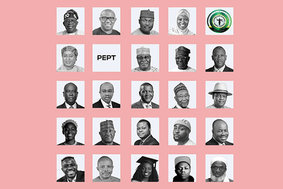The new payments landscape

Feature Highlight
Technological advances are bringing into play powerful and flexible new capabilities such as artificial intelligence and distributed ledger technology.
The international payments landscape is undergoing significant change. New, disruptive technologies are entering the payments market and putting pressure on traditional banking practices. Regulatory scrutiny, particularly around KYC and AML, and changes in consumer and client behaviours and expectations are also forcing the industry to review traditional banking models. The banking sector is facing these challenges head-on, developing a new, more innovative and dynamic payments landscape.
Consumers want their retail experience to be replicated in the banking world; this means instant, frictionless services. At the same time, corporate clients want to reduce payment costs and are entering new trade corridors; they also want transparency, predictability and timeliness of payments.
Regulators have weighed in on consumers’ behalf, promoting new products and services through open banking regulations that pave the way for new, non-bank institutions, along with financial technology companies, to enter the payments market. The wider post-crisis regulatory push means compliance is taking up more of payment professionals’ time. Data privacy, security and resiliency are key concerns.
In particular, managing financial crime compliance requirements and addressing the cyber threat in the high-speed world of real time payments is becoming ever more challenging. Dealing with these threats at a community level is the only way to protect the financial ecosystem.
Finally, technological advances are bringing into play powerful and flexible new capabilities such as artificial intelligence and distributed ledger technology. In many cases, the new entrants have been more adept at harnessing such technologies – in proof of concept, at least – than the payments market incumbents.
Payment actors must keep up with the pace of change and prepare for the future to remain competitive in such a rapidly-evolving landscape.
Growth of Africa’s regional payment systems
Policy makers in Africa have recognised the role that payment systems and other infrastructures play in fostering and deepening economic development. Therefore, over the last 5 years, many African countries have invested in their financial market infrastructures. Several pan-regional payment systems exist in Africa, including the South Africa Development Community (SADC)’s RTGS and the East African Payment System (EAPS). SWIFT is supporting both of these systems, enabling the use of the SWIFT messaging network for safe and secure delivery of payment and settlement messages.
Between April 2017 and March 2018, SADC’s RTGS had already seen 83 participants carry out 323,293 transactions worth 1.25 trillion rand on the system. The EAPS platform was launched in 2013 and now includes five countries: Kenya, Tanzania, Uganda and Rwanda and Burundi.
SWIFT’s recent white paper on African payment flows shows an increase in intra-Africa payments clearing and trade. Regional payments systems continue to support that growth and several regions are now looking at how these could be interconnected to allow payments to flow from one system to another and provide pan-regional settlement capability.
Revolutionising cross-border payments
Historically, cross-border payments have been relatively slow, lacking in transparency and suffered unpredictable fees. The imperative to improve customer service in the cross-border space brought leading banks together with SWIFT to create the global payments innovation initiative – gpi. Objectives from the outset have been to deliver same day use of funds, transparency of fees, end-to-end payments tracking, and the unaltered transfer of remittance information.
Live since January 2017, more than 180 transaction banks have signed up to the service, with more than 80 using SWIFT gpi to exchange hundreds of thousands of payments a day across 500 country corridors. Many African banks are already live and delivering a better service to their corporate customers, including Standard Bank, ABSA Banks, FirstRand Bank and Nedbank, with many more set to go live soon.
Faster payments coming faster than expected
There are also significant strides being taken for instant payments (IP). Australia is the latest market to go live with real-time. The recently-launched New Payments Platform (NPP) has been designed to remove inefficiencies and improve how consumers, businesses and government departments transact with one another.
Many of the components from NPP will be part of SWIFT’s ongoing IP strategy to ensure 24x7, instant, high-volume, low latency services. SWIFT is developing an instant messaging solution for Europe that will provide connectivity to both EBA CLEARING’s RT1 instant payments system and the Eurosystem’s TARGET Instant Payments Settlement Service (TIPS). SWIFT’s evolving portfolio already allows users to connect to other instant payments systems such as TCH’s in the US and the Faster Payment System’s in Hong Kong.
The future: cross currency, instant payments?
Such systems have been designed to support markets where there is a single currency in use. Cross-currency instant payments will not happen on day one of any new IP system. In addition to the challenges on the technical and operational levels, there are also business challenges and FX requirements. Banks and central banks will have to agree how cross-currency instant payments can be exchanged, processed, guaranteed and settled.
In Africa, SWIFT and other partners have been pivotal in developing the foundation for cross-border, cross-currency systems through the SADC’s RTGS and EAPS initiatives. However, moving this process into the realm of instant payments is still a journey, which needs to be taken together.
There are some tough decisions ahead for different payments communities, and collaboration and harmonization will be crucial. Part of SWIFT’s core mission is to help communities come together to define these standards and market practices. SWIFT gpi is an example of how existing networks can be revolutionised to deliver this high-speed future.
As a result of all the changes that are underway, industry players are faced with a myriad of challenges. Not only do they need to find solutions – they must also create opportunities. In the new payment landscape, a delicate balance of harmonisation, innovation and collaboration will be key.
Denis Kruger is Head of Sub-Saharan Africa at SWIFT
Other Features
-
At 50, Olajide Olutuyi vows to intensify focus on social impact
Like Canadian Frank Stronach utilised his Canadian nationality to leverage opportunities in his home country of ...
-
Reflection on ECOWAS Parliament, expectations for the 6th Legislature
The 6th ECOWAS Legislature must sustain the initiated dialogue and sensitisation effort for the Direct Universal ...
-
The $3bn private credit opportunity in Africa
In 2021/2022, domestic credit to the private sector as a percentage of GDP stood at less than 36% in sub-Saharan ...
-
Tinubunomics: Is the tail wagging the dog?
Why long-term vision should drive policy actions in the short term to achieve a sustainable Nigerian economic ...
-
Living in fear and want
Nigerians are being battered by security and economic headwinds. What can be done about it?
-
Analysis of the key provisions of the NERC Multi-Year Tariff Order ...
With the MYTO 2024, we can infer that the Nigerian Electricity Supply Industry is at a turning point with the ...
-
Volcanic explosion of an uncommon agenda for development
Olisa Agbakoba advises the 10th National Assembly on how it can deliver on a transformative legislative agenda for ...
-
Nigeria and the world in 2024
Will it get better or worse for the world that has settled for crises?
-
The Movers and Shakers of Nigeria 2023
This special publication profiles 25 people and institutions based on their societal or industry impact in 2023.
Most Popular News
- IFC, partners back Indorama in Nigeria with $1.25 billion for fertiliser export
- CBN increases capital requirements of banks, gives 24 months for compliance
- Univercells signs MoU with FG on biopharmaceutical development in Nigeria
- CBN settles backlog of foreign exchange obligations
- Ali Pate to deliver keynote speech at NDFF 2024 Conference
- Euromonitor forecasts Sub-Saharan Africa GDP to grow to $4.5trn by 2040












